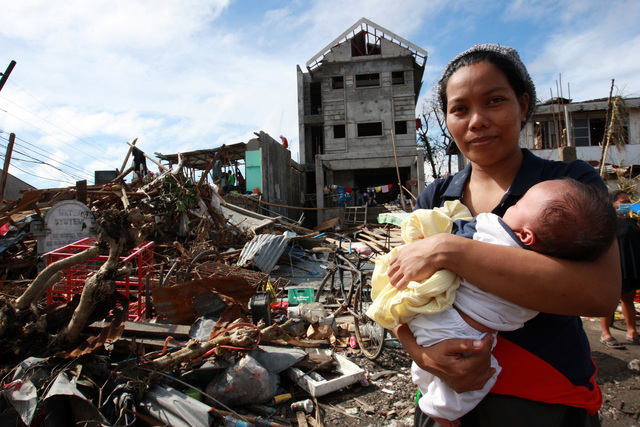聯合國兒童基金會:氣候變化的衝擊 兒童首當其衝
2015-11-24

© UNICEF/NYHQ2013-1027/Maitem
一名婦女和她的嬰兒站在菲律賓超強颱風海燕造成的廢墟中。
超過5億兒童生活在經常氾濫成災的地區,1.6億兒童生活在嚴重乾旱地區
紐約/日內瓦/香港,2015年11月24日—聯合國兒童基金會在聯合國召開第21屆氣候變化大會(即COP21)前發佈的一份報告中說,全球有超過5億兒童生活在洪水經常氾濫成災的地區,並有1.6億兒童生活在嚴重乾旱地區。這些兒童極可能因氣候變化而受到衝擊。
生活在經常氾濫成災的地區的5.3億兒童中,有大約3億兒童於過半人口屬貧困國家生活–亦即是說,他們每天的生活費不足3.1美元(約24港元)。至於生活在嚴重乾旱地區的兒童中,有500萬於過半人口屬貧困國家生活。
聯合國兒童基金會執行主任安東尼.雷克指出:「這些數據說明時間緊逼,必須採取行動。目前這一代兒童對氣候變化應付最少的責任,但是他們和他們的後代將與氣候變化造成的後果一起生活,而往往最弱勢的社區面對的威脅最大。」
氣候變化意味着更多乾旱、洪水和熱浪等惡劣天氣。這些天氣現象將造成死亡、帶來破壞,並加劇兒童致命疾病的擴散,如營養不良、瘧疾和腹瀉。這將造成一個惡性循環:在危機發生前本來已經無法獲得充足飲用水和衛生設施的兒童,將更有可能、更難以從洪水、乾旱或者超強風暴等惡劣天氣中盡快恢復過來;甚至在之後的危機中,面對更大的風險。
生活在經常氾濫成災地區的兒童大部分均在亞洲,而生活在乾旱易發區的兒童則大多數在非洲。
11月30日至12月11日在巴黎參加COP21會議的世界領導人,會於削減溫室氣體排放問題上尋求共識。很多專家指出,削減溫室氣體排放,對於防止全球溫度災難性上升非常重要。
雷克說:「我們知道應該怎麼做才能預防氣候變化造成的破壞性的影響。袖手旁觀並不合情理。為了我們的下一代,為了我們的地球,我們必須在COP21大會上作出正確的決定。」
| 捐款支持UNICEF的全球工作項目 |









